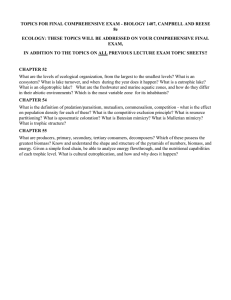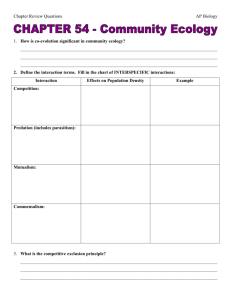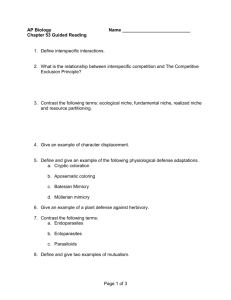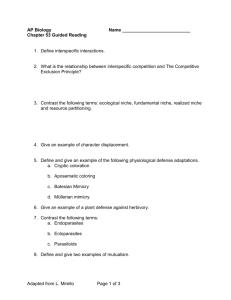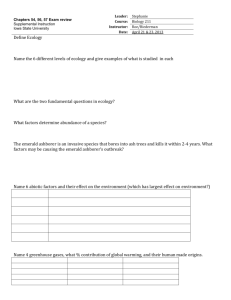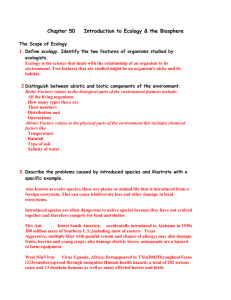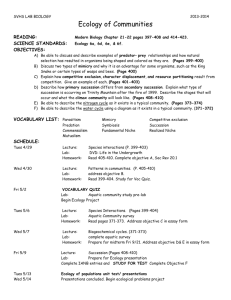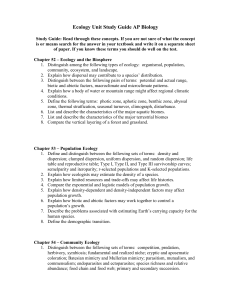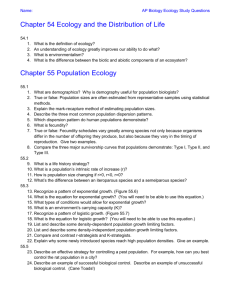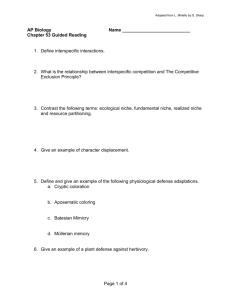Ecology 3 Community Interactions PDQ
advertisement
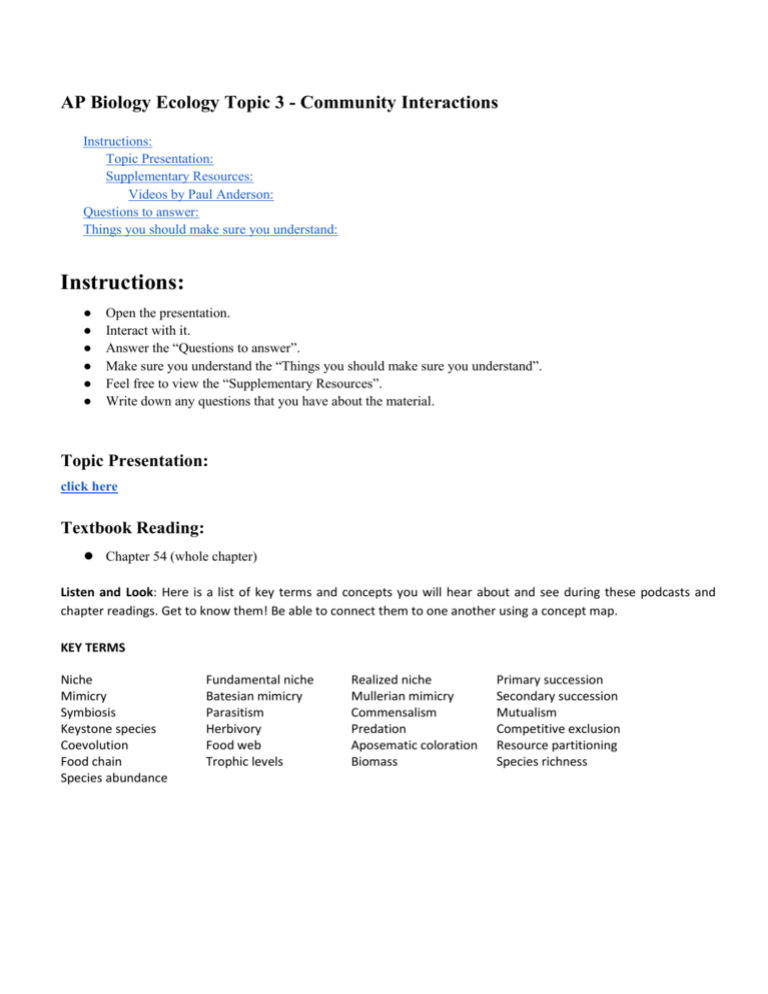
AP Biology Ecology Topic 3 - Community Interactions Instructions: Topic Presentation: Supplementary Resources: Videos by Paul Anderson: Questions to answer: Things you should make sure you understand: Instructions: ● ● ● ● ● ● Open the presentation. Interact with it. Answer the “Questions to answer”. Make sure you understand the “Things you should make sure you understand”. Feel free to view the “Supplementary Resources”. Write down any questions that you have about the material. Topic Presentation: click here Textbook Reading: ● Chapter 54 (whole chapter) Listen and Look: Here is a list of key terms and concepts you will hear about and see during these podcasts and chapter readings. Get to know them! Be able to connect them to one another using a concept map. KEY TERMS Niche Mimicry Symbiosis Keystone species Coevolution Food chain Species abundance Fundamental niche Batesian mimicry Parasitism Herbivory Food web Trophic levels Realized niche Mullerian mimicry Commensalism Predation Aposematic coloration Biomass Primary succession Secondary succession Mutualism Competitive exclusion Resource partitioning Species richness Supplementary Resources: Crashcourse Biology Videos:: Community Ecology: Feel the Love - Crash Course Ecology #4 Community Ecology II: Predators - Crash Course Ecology #5 Ecological Succession: Change is Good - Crash Course Ecology #6 Videos by Paul Anderson: “Niche” “Communities” “Coevolution” “Ecological Succession” “Biodiversity” Questions to answer in your ISN: 1 2 3 4 Explain how competition contributes to competitive exclusion, resource partitioning, and character displacement. Explain how predation contributes to changes in coloration (aposematic and cryptic) and the evolution of mimicry (Batesian and Mullerian). Using a Venn diagram, compare and contrast Batesian and Mullerian mimicry. Give examples of organisms that employ these types of mimicry. Justify, using examples of mutualism and parasitism, the evolutionary benefit of these two types of interspecific interactions and explain how your examples fit those definitions. Why are ecologists unsettled on whether or not there are any truly commensal interactions among organisms? Things you should make sure you understand: (feel free to ask questions about them in class) ● The details of all interactions discussed in this presentation and examples of each. ● How the interactions among members of a community can contribute to emergent properties in the ecosystem. ● How to calculate biodiversity of a community in terms of the Shannon diversity index. ● The effects of community interactions on the trophic structure of a community. ● The effects of energetic and environmental factors on the trophic structure and the diversity of a community. ● How disturbance and succession specifically function to structure a community. ● How island-biogeographical theory can be used to analyze the trophic structure and diversity of a community.
